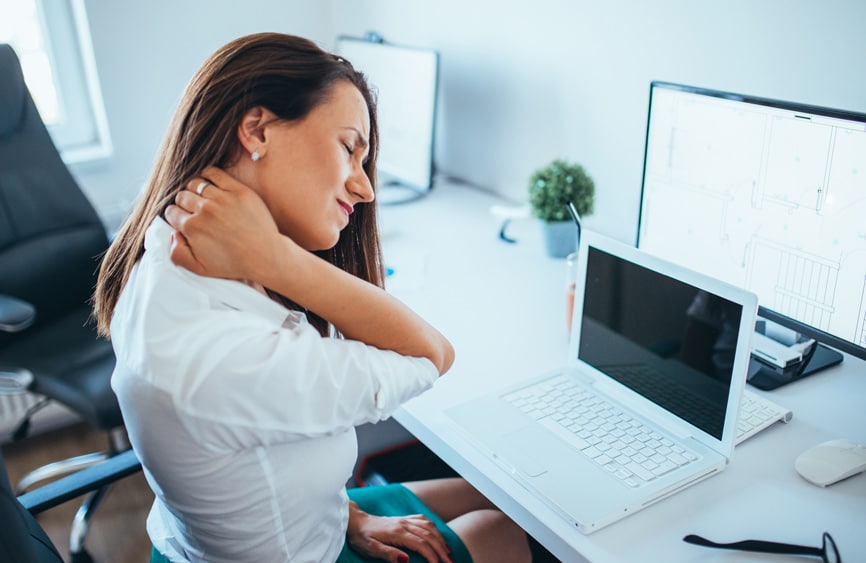
Tips To Loosen Up Your Stiff Neck
Well, it’s official, folks –it’s cold. We’ve written posts before on how cold weather affects chronic pain, but it also contributes to a condition known as Acquired Torticollis. Acquired Torticollis, otherwise known as stiff neck, is the result of muscle spasms in the neck. Symptoms include intense pain on one side of the neck and difficulty moving it without pain. You know the feeling – you can’t turn your head to check your blind spot, you can’t make any sudden movements.
WHAT IS IT CAUSED BY?
A stiff neck can be caused by a number of things including poor posture or a muscle strain.
Muscle strains are the most common cause for stiff neck and are likely the reason you’ve experienced pain. The levator scapula muscle in particular is responsible for the pain because it is located at the back and side of the neck, connecting with the shoulder. The levator scapula muscle is easily strained and could be a result of the following activities:
- Sleeping with the neck in an awkward position
- Holding the neck in an awkward position for a long amount of time {i.e.. cradling the phone between the neck and shoulder}
- Sports injuries {i.e.. sudden impact to the head, falling, repeatedly turning the head from side to side}
- Excessive stress which can lead to tension in the neck
Poor posture can also result in a still neck. Many individuals adopt what’s called antalgic posture, which basically means they slouch. The head hangs forward which over-elongates the neck muscles to support the head. Shoulders are also rounded forward increasing the tension in the neck and back muscles and shortening the front of the neck and chest muscles. Overtime, this position weakens the neck and back muscle’s natural ability to recoil back to a neutral position, resulting in greater susceptibility to muscle spasms.
HOW DO YOU TREAT STIFF NECK?
- Get a massage. Massage therapy is vastly beneficial for a number of conditions and can be done specifically for stiff neck symptoms. Massages can reduce the tension in the affected muscles, increase circulation in the area, reduce swelling, and restore range of motion.
- Be mindful of your posture. Don’t slouch! Be aware of your posture throughout the day, particularly if you sit at a computer all day. Keep your shoulders rounded and pulled back, neck and back upright and relaxed.
- Stretch. Stretching contributes to a greater range of motion and more relaxed muscles which lead to few muscle spasms and days in pain. It may seem like a chore at first – and may even hurt!- but it’ll be easier as you do it everyday!
Topics covered
About the Author
Featured Resources
Insights to Achieve a Pain-Free Life



